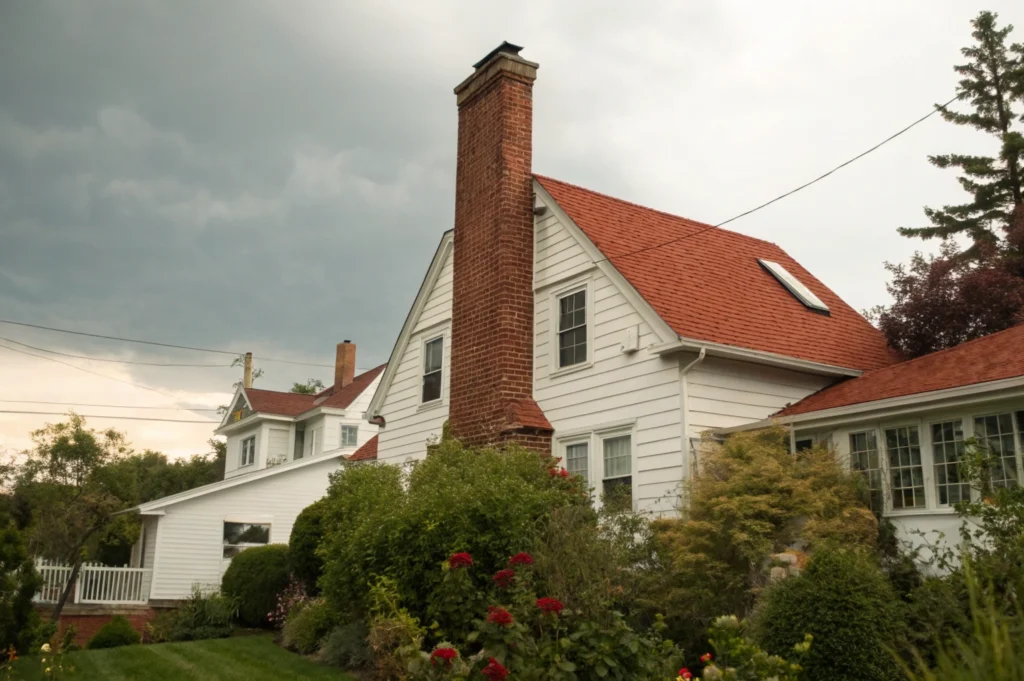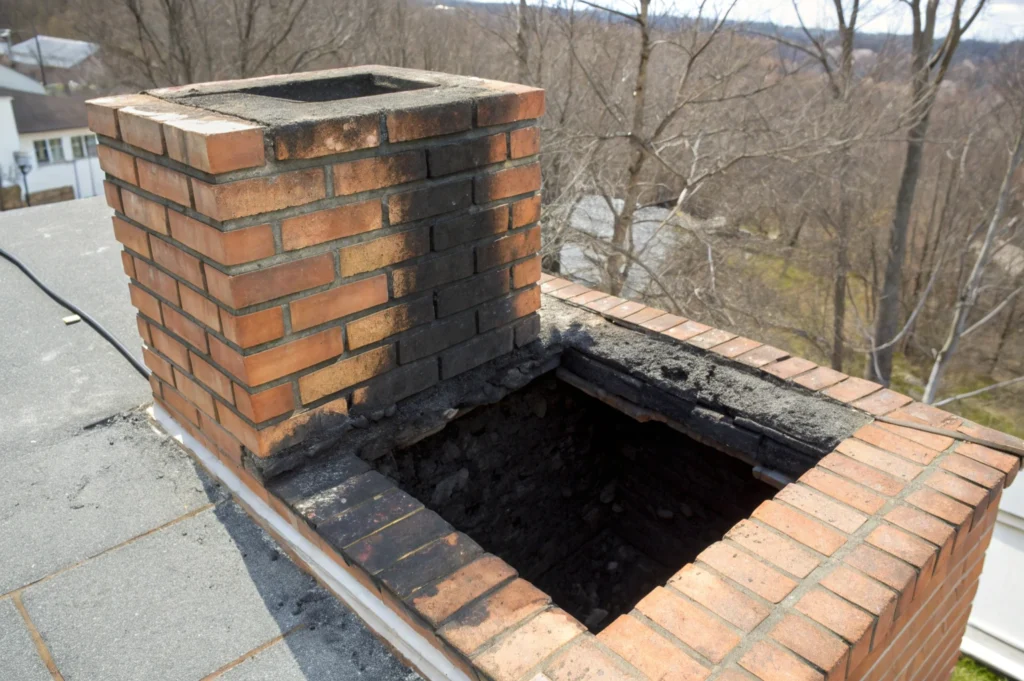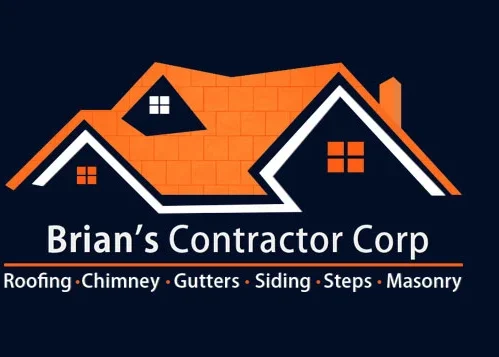
As colder weather approaches, many homeowners prepare their heating systems—but often overlook the chimney and fireplace. Months of disuse can allow debris buildup, structural wear, or hidden blockages to develop, all of which can lead to serious issues when the first fire is lit.
Chimney and fireplace problems often surface at the worst possible time—during the first cold snap—resulting in discomfort, unexpected expenses, and potential safety risks.
This guide outlines seven common issues that can arise during the off-season. By understanding and addressing them now, you can help ensure a safer, more reliable heating experience all winter long.
The Hidden Dangers Lurking in Your Chimney and Fireplace System
Your chimney and fireplace system works harder than any other part of your home during New York’s harsh winters. Yet most homeowners give it less attention than their car’s oil changes.
Think of your chimney as your home’s respiratory system. When it can’t breathe properly, dangerous gases accumulate inside your living space instead of safely venting outside.
Why NY’s Climate Makes Chimney Problems Worse
New York’s freeze-thaw cycles create unique challenges for chimney systems. When temperatures swing from 20°F to 45°F within days, materials expand and contract repeatedly.
This constant movement creates cracks in masonry, loosens flashing, and damages chimney caps. Water infiltration becomes inevitable once these protective barriers fail.
We see this pattern from Manhattan brownstones to Long Island colonials. The combination of coastal humidity and temperature extremes accelerates chimney deterioration faster than in most other regions.
The Real Cost of Ignoring Chimney Maintenance
Prevention costs significantly less than crisis management. Here’s what we typically see:
- Annual inspection and cleaning: $200-400
- Emergency winter repairs: $800-3,500
- Major reconstruction after neglect: $5,000-12,000
Insurance companies increasingly scrutinize chimney-related claims. Many policies require documented annual maintenance to cover fire or water damage claims.
Seven Critical Problems That Develop Without Professional Chimney Service

Each heating season, we encounter the same preventable problems across New York. These issues don’t announce themselves – they develop silently until they create dangerous or expensive situations.
Problem 1 – Creosote Buildup and Fire Hazards
Creosote forms when wood smoke cools inside your chimney flue. This tar-like substance accumulates with each fire, creating increasingly dangerous conditions.
- Stage 1 creosote looks like brown or black soot.
- Stage 2 appears as black flakes or tar-like deposits.
- Stage 3 creates a hard, shiny coating that’s extremely flammable and nearly impossible to remove without professional equipment.
Professional chimney sweep services remove all creosote levels safely using specialized brushes, vacuums, and chemical treatments when necessary.
How often does your chimney need cleaning? Wood-burning fireplaces require annual cleaning, while gas fireplaces need inspection every two years.
Problem 2 – Structural Damage from Water Infiltration
Water causes more chimney damage than fire in New York’s climate. Masonry absorbs moisture like a sponge, then expands when temperatures drop below freezing.
This freeze-thaw process creates:
- Spalling bricks that flake and crumble
- Mortar joint deterioration
- Chimney crown cracks
- Flashing separation from roof connections
Professional waterproofing treatments create invisible barriers that repel moisture while allowing masonry to breathe naturally.
Problem 3 – Carbon Monoxide Risks from Poor Ventilation
Carbon monoxide poisoning sends thousands of Americans to hospitals annually. Your chimney’s primary job is preventing this colorless, odorless gas from accumulating in your home.
Blocked flues, damaged dampers, and structural problems all interfere with proper ventilation. Even partial blockages create dangerous backdraft conditions that push toxic gases into living spaces.
Animal nests, debris accumulation, and structural damage commonly block flues during months of non-use. Professional inspection identifies these hazards before you light your first fire.
Warning signs include:
- Persistent fireplace odors
- White staining on exterior chimney
- Rust on damper or firebox
- Difficulty starting or maintaining fires
Professional testing equipment measures draft efficiency and identifies ventilation problems that visual inspection might miss.
Problem 4 – Animal Intrusion and Nesting
Raccoons, squirrels, birds, and bats view your chimney as a perfect nesting habitat. Uncapped chimneys invite wildlife problems that create health hazards and fire risks.
Nesting materials block flues, animal waste creates health concerns, and deceased animals decompose in inaccessible areas. These problems compound quickly once animals establish residence.
Here’s a quick scenario: A Long Island homeowner heard scratching sounds from their fireplace in August. By September, a family of raccoons had established a nest in their flue, requiring professional wildlife removal, extensive cleaning, and in severe cases potential chimney rebuild totaling $2,400.
Professional chimney caps and screens prevent animal intrusion while maintaining proper ventilation. Quality caps include mesh screening and weather-resistant materials designed for New York’s climate.
Problem 5 – Liner Deterioration and Efficiency Loss
Chimney liners protect your home’s structure from heat and corrosive byproducts. Clay tile liners crack from thermal shock, while metal liners corrode from acidic condensation.
Compromised liners allow dangerous gases to escape into wall cavities and living spaces. They also reduce heating efficiency, increasing energy costs throughout winter.
Professional liner inspection uses specialized cameras to examine areas invisible from above or below. Modern stainless steel liners provide superior protection and efficiency compared to original clay tile systems.
- Signs your liner needs attention:
- Rust stains around fireplace
- Deteriorated mortar joints
- White staining on exterior chimney
- Increased heating costs
Problem 6 – Exterior Masonry and Chimney Cap Issues
Your chimney extends above your roofline, exposing it to weather extremes year-round. Chimney caps protect the flue opening while crowns shed water away from masonry.
Failed caps allow rain, snow, and animals direct access to your flue system. Cracked crowns channel water into masonry, accelerating freeze-thaw damage.
Consider this scenario: A Bronx homeowner postponed chimney cap replacement after noticing rust and damage in spring. Winter weather infiltrated their flue system, causing water damage that required interior repairs, chimney repair work, new liner installation, and complete crown reconstruction totaling $8,500.
Professional chimney restoration addresses problems before they compromise structural integrity. We use materials specifically designed for New York’s climate conditions.
Problem 7 – Damper and Firebox Problems
Your damper controls airflow between your fireplace and flue. Properly functioning dampers prevent heat loss while ensuring adequate ventilation during use.
Rust, warping, and mechanical failure prevent dampers from sealing completely. This allows heated air to escape continuously, increasing energy costs and creating draft problems.
Firebox cracks develop from thermal expansion and water infiltration. These cracks compromise fire containment and allow dangerous gases to escape into living areas.
Professional damper and firebox restoration ensures safe, efficient operation throughout the heating season. Modern top-sealing dampers provide superior performance compared to traditional throat dampers.
How Professional Chimney Service Addresses These Risks Before Winter
Comprehensive chimney service combines inspection, cleaning, testing, and preventive maintenance into a systematic approach that addresses current problems while preventing future issues.
What Comprehensive Chimney Service Includes
Professional service begins with detailed inspection using specialized equipment. We examine every component from foundation to cap, documenting conditions with digital photography.
Our multi-point inspection covers:
- Exterior masonry and flashing conditions
- Interior firebox and damper operation
- Flue liner integrity and cleanliness
- Cap and crown structural condition
- Safety equipment function and compliance
Cleaning involves more than removing visible soot. We address creosote accumulation, animal nests, construction debris, and vegetation growth using appropriate tools for each situation.
Safety testing measures draft efficiency, carbon monoxide levels, and structural soundness. These tests identify problems that visual inspection cannot detect.
Why Fall Timing is Critical for NY Homeowners
September through November provides the ideal window for chimney service in New York. Weather remains mild enough for comfortable outdoor work while allowing time to address discovered problems before the heating season begins.
Contractor availability increases significantly during fall months. Emergency repairs during heating season often require waiting days or weeks for service, leaving families without heat during cold weather.
Fall service also allows time for thorough system testing before you depend on your fireplace for warmth and ambiance during winter months.
Making the Right Choice – Professional Chimney Service Selection
Choosing qualified chimney service requires understanding industry standards and local requirements. Not all chimney companies provide equivalent service levels or maintain proper credentials.
What to Look for in a NY Chimney Service Provider
Licensed and insured contractors protect you from liability while ensuring professional accountability. New York requires specific licensing for chimney work, and reputable companies maintain comprehensive insurance coverage.
Professional certifications demonstrate commitment to industry standards. Look for:
- Chimney Safety Institute of America (CSIA) certification
- National Fireplace Institute (NFI) credentials
- Local trade association memberships
- Ongoing education participation
Established local presence indicates stability and accountability. Companies with long-term community involvement have reputations to protect and relationships to maintain.
Questions to Ask Before Hiring
Experience with New York building types matters significantly. Brownstones, co-ops, and suburban homes present different challenges requiring specialized knowledge and appropriate equipment.
Ask about:
- Years serving your specific area
- Experience with your building type
- References from recent customers
- Emergency service availability
- Warranty terms and follow-up policies
Transparent pricing eliminates surprises and builds trust. Reputable companies provide detailed written estimates explaining all recommended work and associated costs.
What happens if problems develop during winter? Reliable companies offer emergency service and prioritize existing customers during peak demand periods.
Take Action Now – Your Family’s Safety Depends on It
Your chimney and fireplace system requires professional attention before winter arrives. Every day you wait increases the risk of dangerous problems developing when you need your heating system most.
The seven critical problems we’ve discussed don’t announce themselves with obvious warning signs. They develop silently during months of neglect, then create expensive emergencies when temperatures drop and you depend on your fireplace for warmth.
Professional service now prevents costly repairs later while ensuring your family’s safety throughout the heating season. The small investment in fall maintenance pays dividends in peace of mind, energy efficiency, and emergency prevention.
Don’t wait until that first cold night when smoke fills your living room or carbon monoxide detectors start alarming. Schedule your comprehensive chimney inspection and service today while contractors have availability and weather permits thorough work.
Your family deserves the security of knowing their heating system operates safely and efficiently. Professional chimney service provides that security while protecting your home’s value and your loved ones’ wellbeing.
Contact us today to schedule your pre-winter chimney service. Limited appointments remain available before peak season demand creates scheduling delays.


